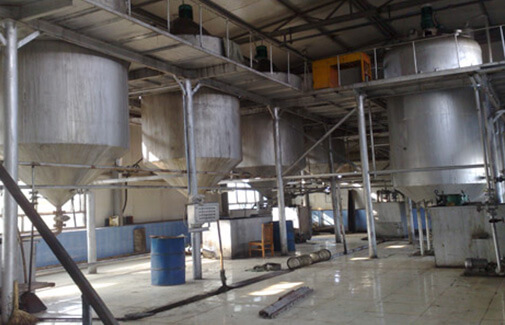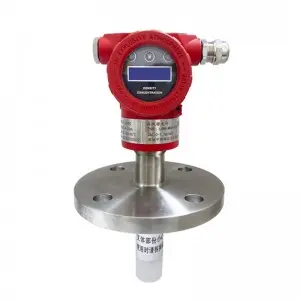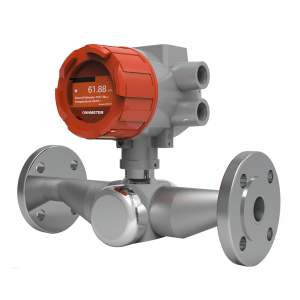Oil dry fractionation is a physical process used in oil refining industry to separate liquid oils into different fractions based on their melting points, without the use of solvents or chemicals. It’s commonly used in palm oil or palm kernel oil, coconut oil and soybean oil for texture improving.
Working Principle and Importance of Real-Time Monitoring
Dry fractionation is a physical separation method that utilizes the varying melting points of fat components in edible oils, performed without solvents. Through precise temperature adjustments, higher-melting-point fatty acids are separated from the lower-melting liquid fraction. In the case of palm kernel oil, the resulting solid fat fraction is commonly used as a cocoa butter alternative.
Within a crystallization unit, the oil is slowly cooled to promote the formation of semisolid crystals. These high-melting crystals, referred to as stearins, form the solid fraction, while the liquid fraction, known as oleins, is isolated via high-pressure membrane filtration.
The lonnmeter inline analyzers, which require no maintenance, provide real-time monitoring of the dry fractionation process of palm oil by measuring sonic velocity and attenuation. When the desired solid fat content (SFC) is reached, the oil fractions are filtered, delivering consistent, high-quality results.

Benefits of Introducing of Inline Concentration Meter
Integrating a concentration meter for oil into your operations offers multiple advantages, particularly for oil refining, petrochemical, and chemical plants. Here are the core benefits:
- Enhanced Efficiency: Real-time data from an oil concentration sensor allows for immediate process adjustments, reducing downtime and improving throughput.
- Cost Reduction: By minimizing waste and optimizing resource use, a concentration meter for oil lowers production costs.
- Regulatory Compliance: Continuous monitoring ensures that oil specifications meet industry standards, reducing the risk of costly violations.
- Improved Product Quality: Precise concentration measurements lead to consistent output, enhancing customer satisfaction and brand reputation.
- Data-Driven Decisions: The actionable insights provided by an oil concentration meter empower operators to make informed choices, boosting overall plant performance.
These benefits make oil concentration sensors indispensable tools for modern industrial facilities, particularly those focused on the dry fractionation of palm oil or similar processes.
Recommended Lonnmeter Oil Concentration Sensor
Selecting the appropriate oil concentration meter depends on your plant’s specific needs. Factors to consider include measurement range, environmental conditions, and integration with existing systems. Coriolis concentration meter and ultrasonic concentration meter are two appropriate options for viscous liquid.
Coriolis Concentration Meter
Liquid density is measured according to the correlation between the Coriolis force and density, then concentration is calculated further via density and concentration values.
Ultrasonic Concentration Meter
The non-nuclear density meter is appliable to real-time density measurement in all kinds of slurries. This measurement method is not affected by the conductivity, color and transparency of the liquid, ensuring extremely high reliability.
FAQs About Oil concentration Sensors
What is an oil concentration sensor, and how does it work?
An oil concentration sensor is a device that measures the concentration of oil in real time, typically using technologies like ultrasonic or vibrational methods. It provides continuous data on oil concentration, enabling precise control of industrial processes like the dry fractionation of palm oil. By detecting changes in concentration, the sensor helps operators maintain consistent product quality and optimize production parameters.
How does a concentration meter for oil improve cost efficiency?
A concentration meter for oil reduces costs by minimizing waste, optimizing resource use, and preventing costly rework due to quality issues. In processes like oil dry fractionation, real-time monitoring ensures that the oil meets specifications without requiring excessive energy or raw materials, directly impacting the bottom line.
In today’s competitive industrial landscape, adopting advanced technologies like an oil concentration sensor is essential for oil refining, petrochemical, and chemical plants. These devices provide real-time insights, enabling precise control of processes like the dry fractionation process of palm oil. By enhancing efficiency, reducing costs, and ensuring compliance, an oil concentration meter delivers measurable value to your operations. To take the next step toward optimizing your plant’s performance, explore our range of cutting-edge concentration meters for oil and see how they can transform your production line. Contact us today to schedule a consultation and discover tailored solutions for your facility.
Post time: Jul-15-2025












